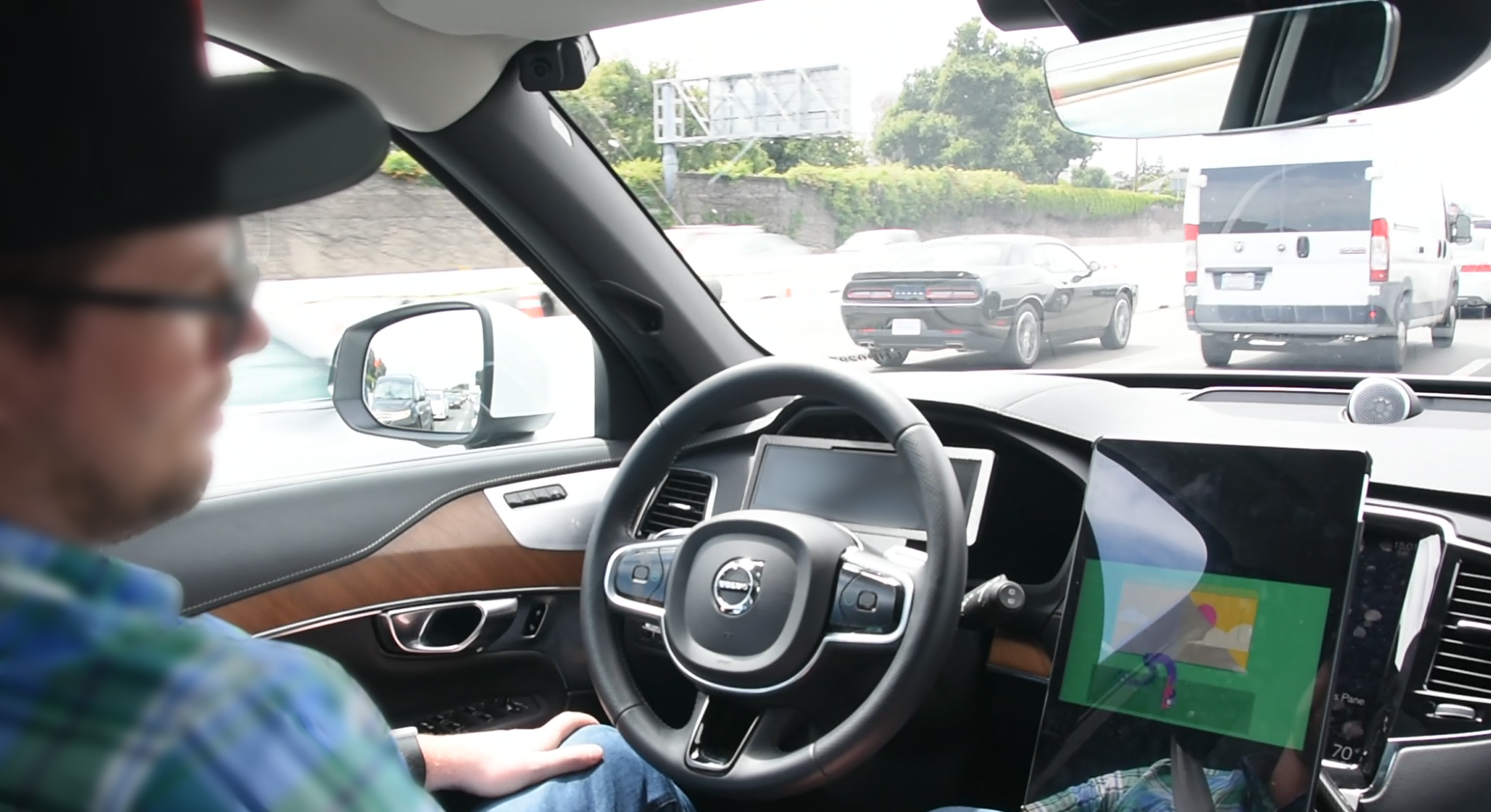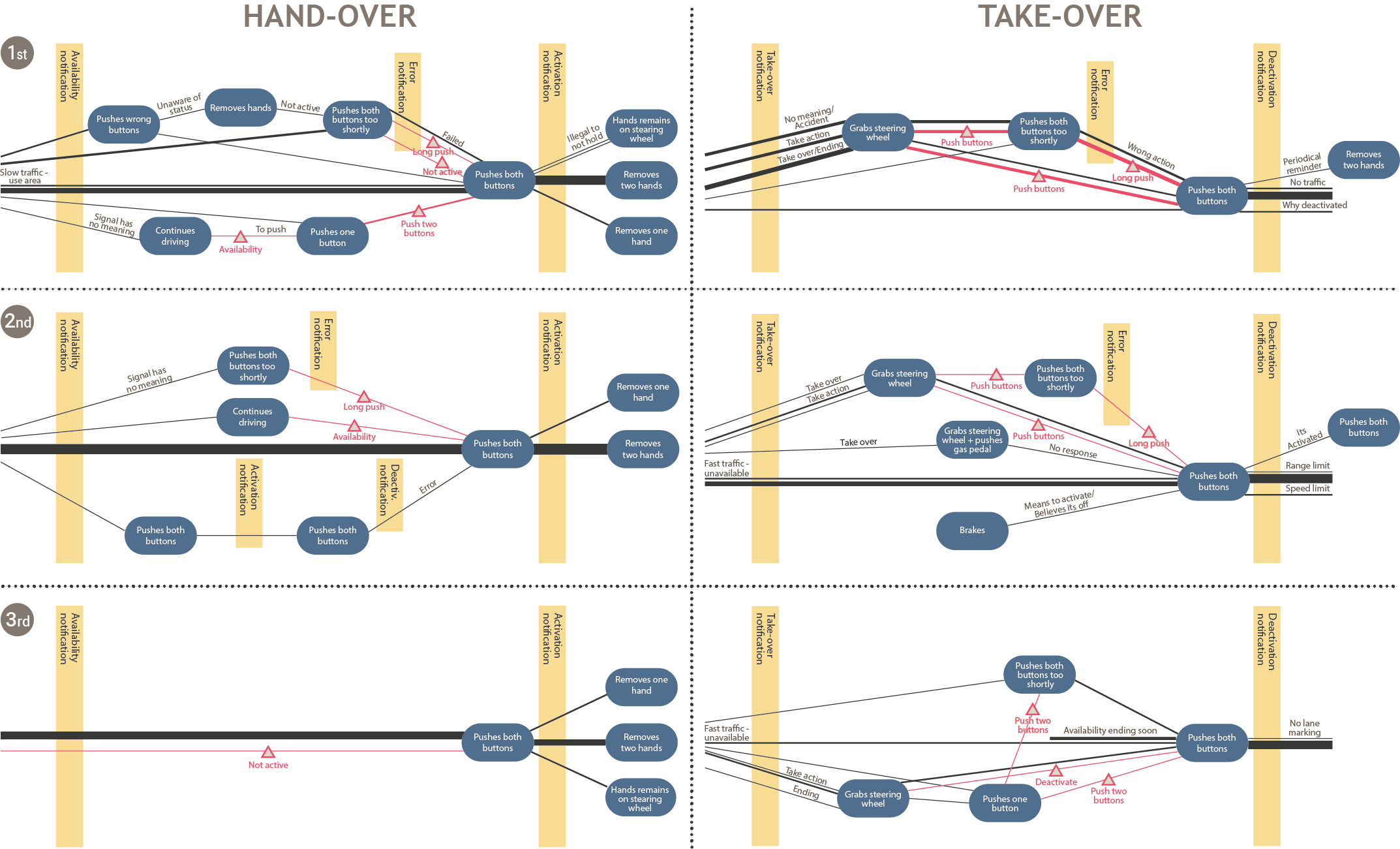
On-road study conducted in the San Francisco Bay Area, USA, where users experienced a car with two automated driving functions in rush hour traffic
Automated vehicle systems can improve driving performance and users’ experience of travelling by car but introducing driving automation into vehicles can also presents challenges for drivers, often resulting in behavioral adaptations that can undermine anticipated advantages. Therefore, this study investigated how users understand and interact with a car that have multiple levels of automation.
I helped plan, conduct and analyze the study.

The on-road study was conducted in the San Francisco Bay Area, USA, in June 2019. In the study 20 participants experienced a car with two automated functions - an advanced driver assistance system (ADAS) and an automated driving system (ADS) - in rush hour traffic using a Wizard-of-Oz car.

The study was conducted using a mixed-methods approach, with a combination of quantitative and qualitative data collection methods. Data was collected both during the drive, through a think-aloud protocol and video recordings, and after the drive, through an interview that focused on the participants’ understanding of the system. The interview was semi-structured but included structured interview techniques and sessions that used mediating objects to better elicit users complex understanding.
The study identified that the participants' understanding of the automated system was multifaceted and complex, influenced by a combination of their conceptual models (including instructions provided before the trial, naming of the system, and previous experiences with similar systems), vehicle interfaces (such as in-vehicle displays, seat belt tug, and steering wheel torque), vehicle behavior (including acceleration, braking, and lane position), and environment (other road users and the road itself). This suggests that vehicle designers must consider various ways to influence users' understanding beyond in-vehicle displays.

The study also found that many participants perceived the transition from automated driving to manual driving negatively, due to several underlying reasons that vary in temporality and originate from different phases of the transition. Additionally, various types of user errors were identified, which were related to the vehicle interface, pre-existing knowledge, and misinterpretations of vehicle functionality that arose during use.
Apart from findings related to the design of automated systems, the study contributed to enhancing theoretical knowledge of users' experiences and understanding of automated systems. It also helped in developing new methods and improving existing ones aimed at eliciting users' understanding and identifying use errors.
Johansson, M., Söderholm, M., Novakazi, F., & Rydström, A. (2021). The decline of user experience in transition from automated driving to manual driving. Information (Switzerland), 12(3). https://doi.org/10.3390/info12030126
Novakazi, F., Johansson, M., Strömberg, H., & Karlsson, M. (2021). Levels of what? Investigating drivers' understanding of different levels of automation in vehicles. Journal of Cognitive Engineering and Decision Making, 15(2-3), 116-132. https://doi.org/10.1177/15553434211009024
Johansson, M., & Novakazi, F. (2023). Action-Meaning Networks - A Novel Methodology to Identify Unsafe Use of Driving Automation. The 8th HUMANIST Conference. Berlin, Germany.